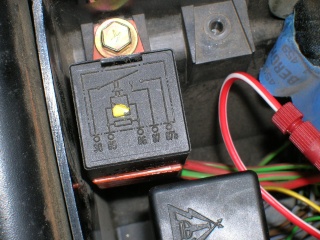1

 battery/electrical fault Sun Jun 01, 2008 1:01 pm
battery/electrical fault Sun Jun 01, 2008 1:01 pm
twcarlisle
New member

I am new to K bikes. I've had and ridden this 1985 2V K100 for about a year. I noticed though that while all of the electrical seemed to work marginally UK, I had to purchase a trickle-charger in order to keep the battery up and that the charge light would stay on for a long time after a ride of any length. I purchased a new battery last fall but when I went to install it I noticed that even fully charged as soon as would start to re-connect the wires the charger would go to red (light) indicating it needed a charge. since the ignition and kill switch were off this implies a short to me. I waited until now to tear into it .( the bike's electrical system has been unconnected since fall). What I discovered was that 2 main wires on the positive pole connect without a problem but the third going to a little Green, 1" cube box, under the seat which from the owners Manual diagram should be #43 the starter relay. Nothing seems to be wired right though. For instance one wire goes to ground and in the diagram nothing should be going to ground (#30) Is that correct? another wire #85 is spiced into a wire going to the rear brake-light. #87 goes to the battery + terminal #86 is cut off and no wire anywhere in sight #87b has nothing on it. Nothing appears to be fused. What is amazing to me is that the bike starts and runs puts on the right trouble light until the brakes are pressed and turn signals work, starter motor works. the alternator is in question since it did not seem to be putting back a charge when I was riding it. I don't now where to look for: Load shedding relay, or how to get into the back of the fuse box. Maybe I'm asking too much but can any one help. I've worked on lots of cars with good success but no bikes. I really like this machine though and am hesitant to re-connect it the way it was. It may already be damaged.















